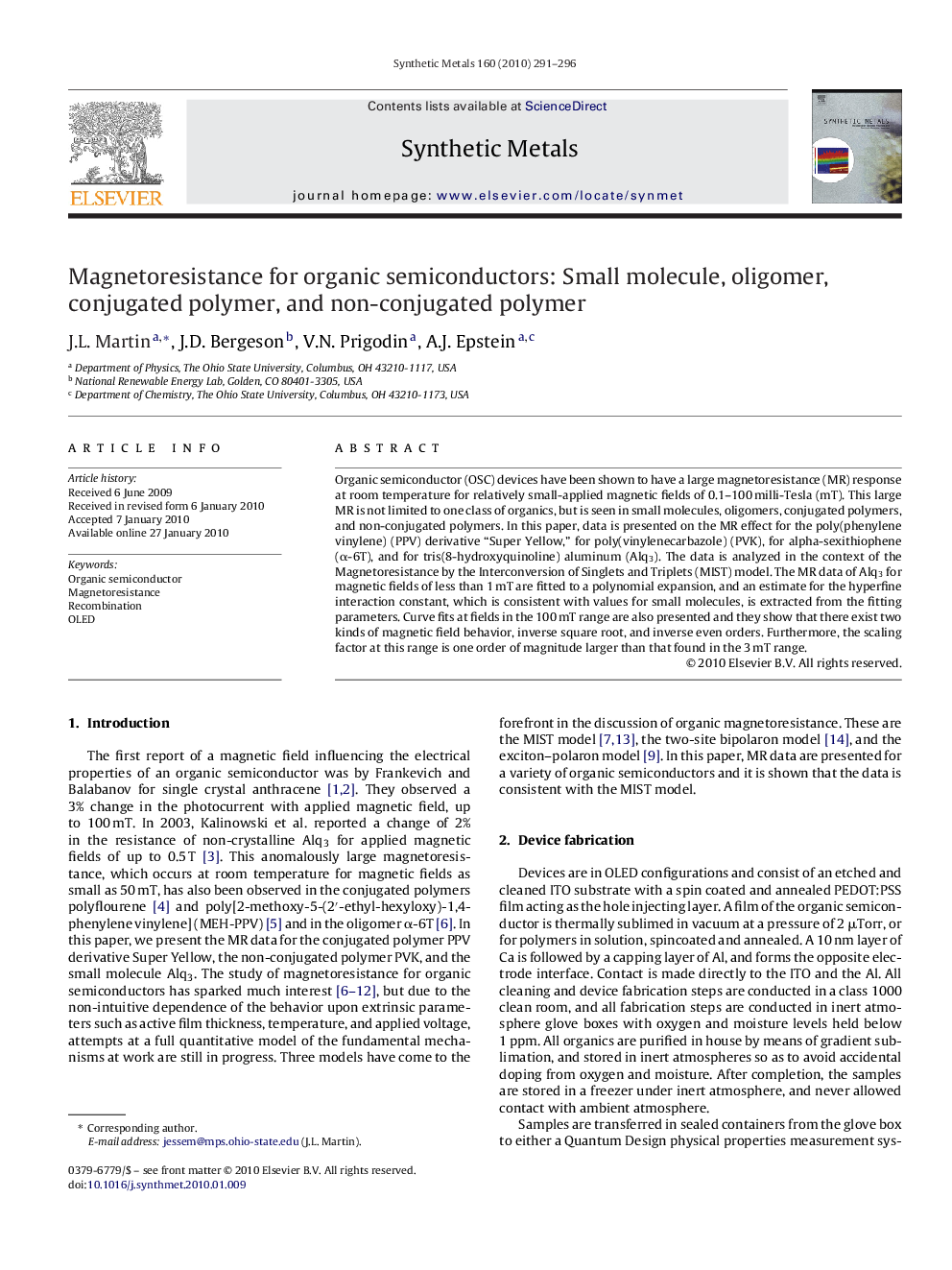| Article ID | Journal | Published Year | Pages | File Type |
|---|---|---|---|---|
| 1442929 | Synthetic Metals | 2010 | 6 Pages |
Organic semiconductor (OSC) devices have been shown to have a large magnetoresistance (MR) response at room temperature for relatively small-applied magnetic fields of 0.1–100 milli-Tesla (mT). This large MR is not limited to one class of organics, but is seen in small molecules, oligomers, conjugated polymers, and non-conjugated polymers. In this paper, data is presented on the MR effect for the poly(phenylene vinylene) (PPV) derivative “Super Yellow,” for poly(vinylenecarbazole) (PVK), for alpha-sexithiophene (α-6T), and for tris(8-hydroxyquinoline) aluminum (Alq3). The data is analyzed in the context of the Magnetoresistance by the Interconversion of Singlets and Triplets (MIST) model. The MR data of Alq3 for magnetic fields of less than 1 mT are fitted to a polynomial expansion, and an estimate for the hyperfine interaction constant, which is consistent with values for small molecules, is extracted from the fitting parameters. Curve fits at fields in the 100 mT range are also presented and they show that there exist two kinds of magnetic field behavior, inverse square root, and inverse even orders. Furthermore, the scaling factor at this range is one order of magnitude larger than that found in the 3 mT range.
